Earlier this month, the Foundry was excited to once again welcome our user community back to Berkeley Lab for the 2023 Annual User Meeting.
The morning kicked off with a welcome from the User Executive Committee Chair, Boyce Chang and from Energy Sciences Area Associate Lab Director, Jeff Neaton. Foundry Director Kristin Persson provided a Foundry update – detailing the overall state of the facility, as well as highlighting its scientific impact over the past year. Some notable stats include the involvement of almost 1,000 users and the publication of 400 pieces of research, with over half designated as high impact by DOE.
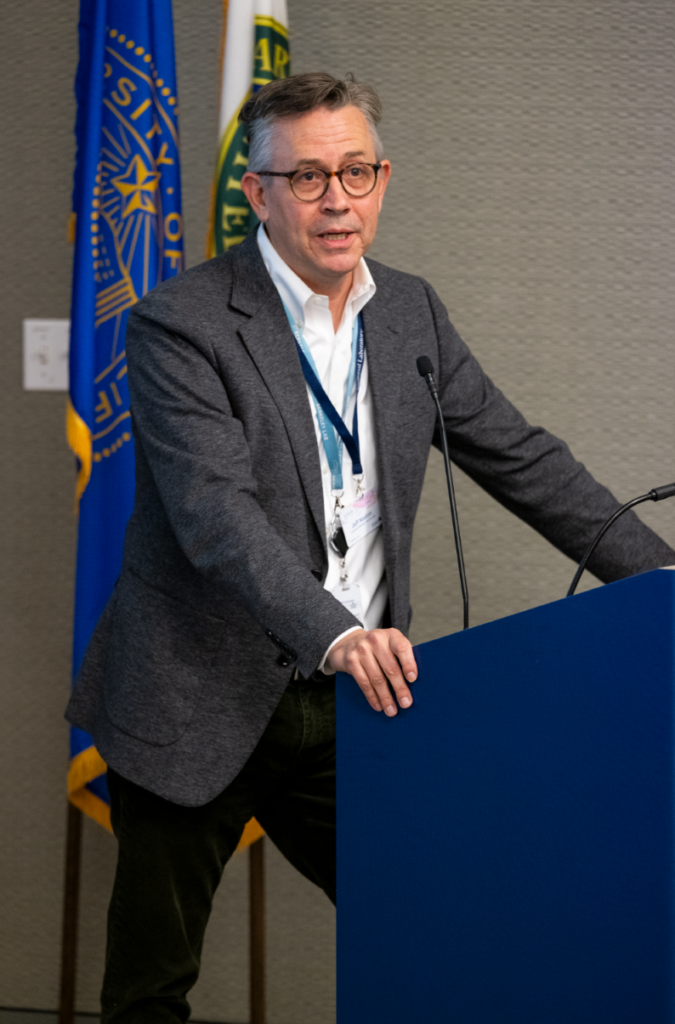
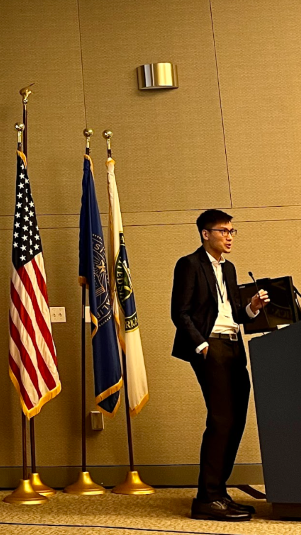
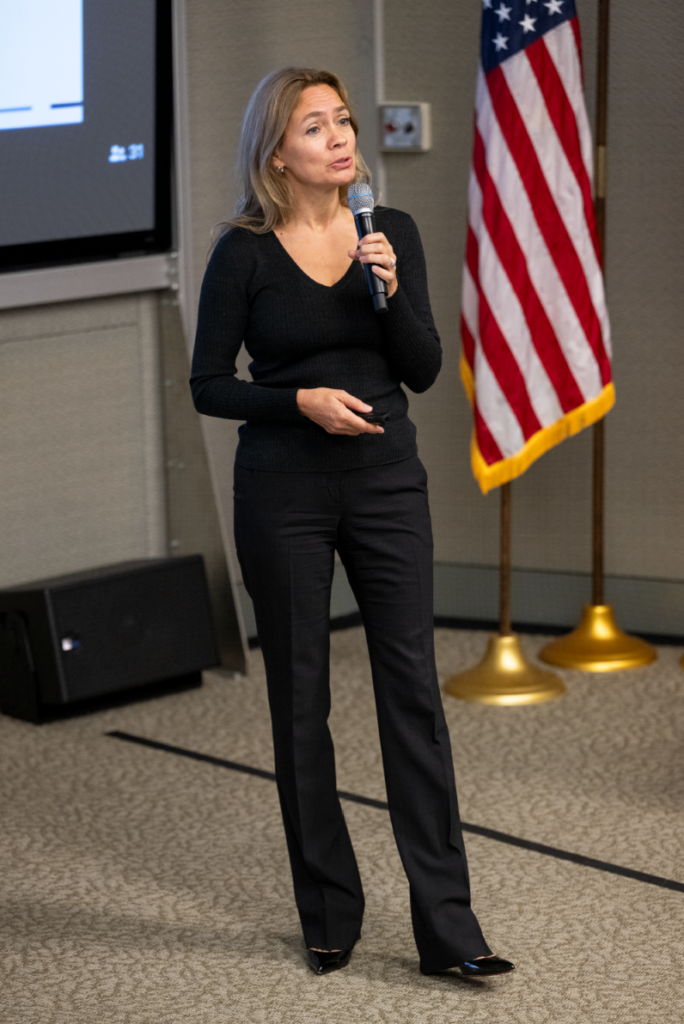
The day’s keynote speaker, Nathalie de Leon, Associate Professor of Electrical and Computer Engineering and head of the de Leon Group at Princeton University delivered an address on new platforms for quantum sensing and computing. She highlighted her group’s research which has shown a path to rational, directed improvement of superconducting qubits through parametrization and direct materials characterization.
In the next segment, AUM participants heard from Foundry users, starting with Aya Buckley from Twelve. She described the connection Twelve has had with the Lab since its early days to the present and how the partnership with the Foundry has enabled the development of scalable CO2 electrolyzers for a fossil-free future.
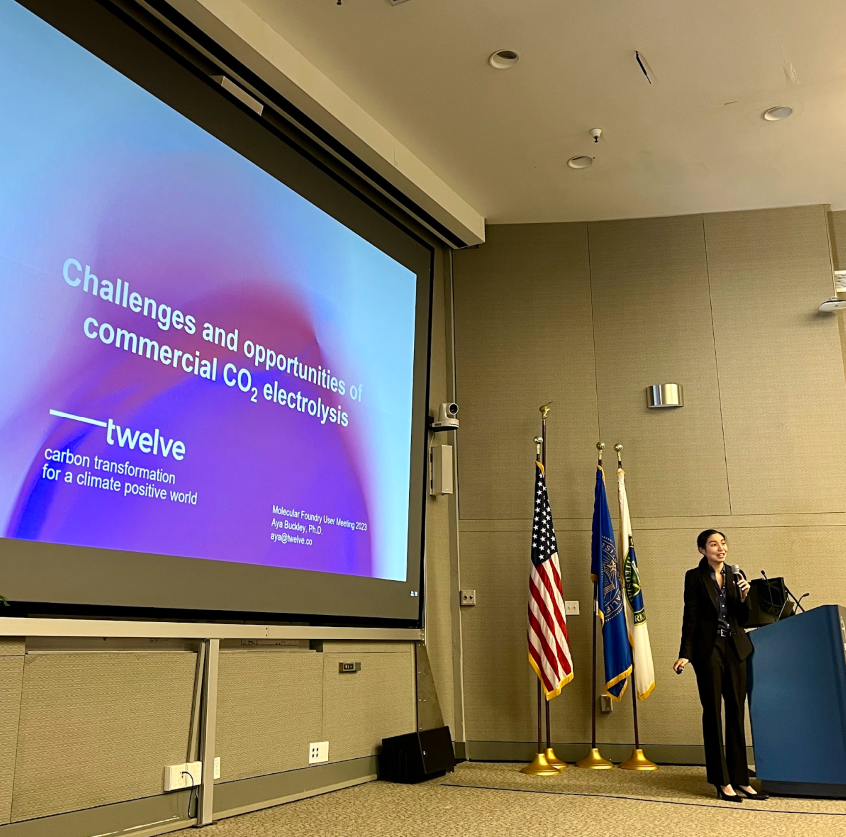

The second user to speak was Yang Yang, an assistant professor at Penn State. Yang presented research focused on developing a better understanding of one dimensional corrosion in metals. The research utilized four-dimensional scanning transmission electron microscopy to achieve nanometer resolution of the corrosion.
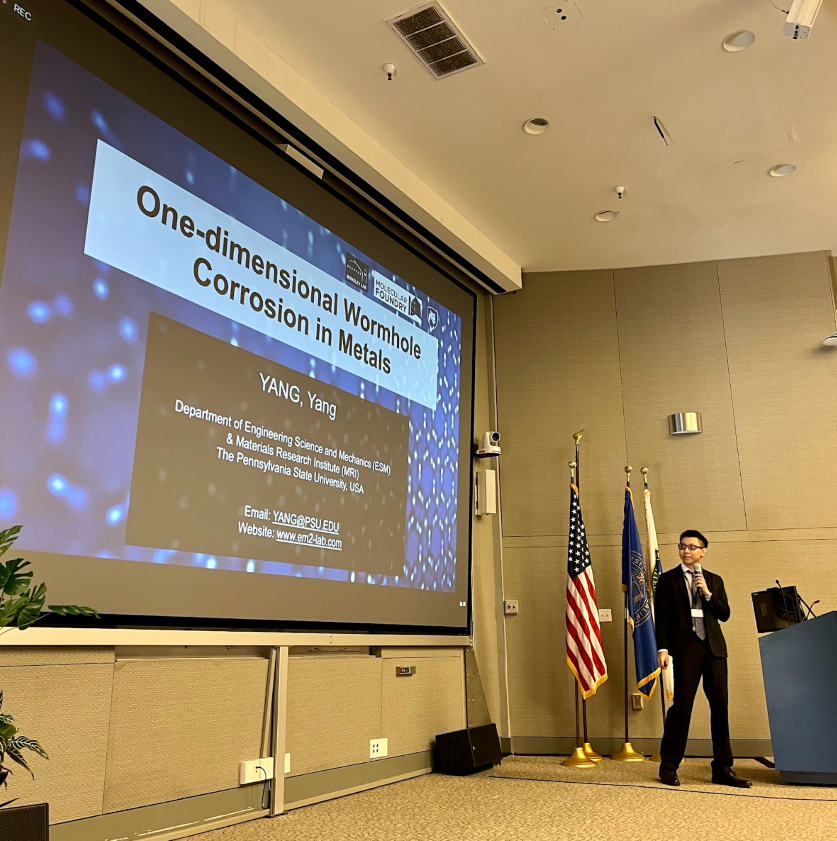

To close out the user highlights, Seyhan Salman, an assistant professor at Clark Atlanta University, spoke about organic electronic devices. She highlighted research dealing with the evaluation of the electronic states of multicomponent organic molecular materials.
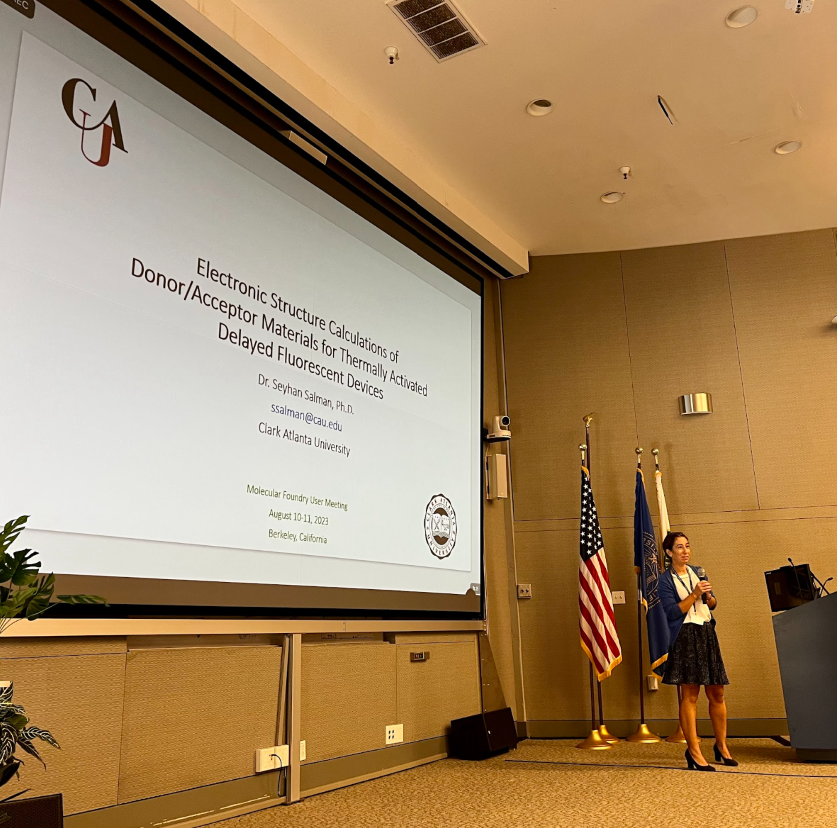

After lunch, a variety of breakout symposia were held for meeting attendees to visit. The day featured four symposia covering machine learning for materials synthesis, the lifetime work of Frank Ogletree, next-gen materials and interfaces for quantum applications, and fostering partnerships among minority-serving institutions.
Summaries of the symposia are below:
Machine Learning and Data-Driven Approaches for Materials Synthesis, Characterization, and Understanding
Recent advances in data-driven methodologies such as data mining, machine learning, and statistical modeling have enabled researchers to incorporate observations and technical intuition that may be difficult to analytically define into the experimentation process and extract out statistically-relevant behavior. Simultaneously, high-throughput synthesis and characterization have led to a deluge of scientific data that presents new challenges in both understanding information content and responding appropriately to focus on interesting regions or phenomena. This symposium will highlight the diverse opportunities and challenges in which data science can inform, augment, and improve experimentation and analysis for applications spanning autonomous materials discovery and synthesis, correlative and multimodal measurements, novel data analysis algorithms, and data infrastructure challenges that underpin implementation into experimental workflows.
New Ways of Seeing – a symposium in honor of the lifetime work of Frank Ogletree
Frank Ogletree had an amazing career dedicated to pushing the envelope to advance and develop entire new material characterization techniques. Frank retired this year. This symposium will be dedicated to his guiding principle, of always trying to find new ways of seeing. We will discuss state of the art Scanning Probe Microscopy, high pressure XPS, and Correlation Microspectroscopy and Frank’s contributions to these fields. We will also discuss next generation material characterization techniques that need to be developed.
Next generation materials and interfaces for quantum applications
The performance of next-generation quantum devices depends on engineering the properties of materials and interfaces for improved coherence and reproducibility. This symposium’s focus is coherence and Two Level Systems (TLS) in two opposing limits. The first are quantum systems which utilize TLS, e.g for quantum emission. In this regime, two-dimensional materials are a promising engineering platform that enable easy and rapid prototyping through artificial stacking, straining, and twisting. Understanding the fundamental mechanisms driving their optical properties is of importance to advance their controlled synthesis and device application. At the other limit are systems such as superconducting qubits, where TLS impact coherence in various ways. Though choice of gates and algorithms may provide some improvement in coherence and gate fidelities, these are ultimately determined by material characteristics and fabrication precision. Therefore, advanced material research focuses on fabrication of clean, defect free interfaces and surfaces, in order to enhance performance and allow for scalable quantum systems. This Symposium will bring together Molecular Foundry users and experts in the above two areas to discuss and present recent advances in fabrication and characterization of quantum materials and systems.
Fostering Partnerships Among Minority-Serving Institutions and National Laboratories
Minority-Serving Institutions are vital to the education and development of a diverse workforce in science, technology, engineering, and mathematics, and thereby contribute to the Department of Energy’s goals in diversity, equity, and inclusion. Science User Facilities at National Laboratories are positioned to contribute to these goals through partnerships with faculty, students, and trainees at MSIs, to facilitate access to capabilities and expertise available through user programs. This session will provide a forum for exchange on how to support effective partnerships among these institutions, featuring the perspectives of MSIs, user facilities, and successful collaborations.
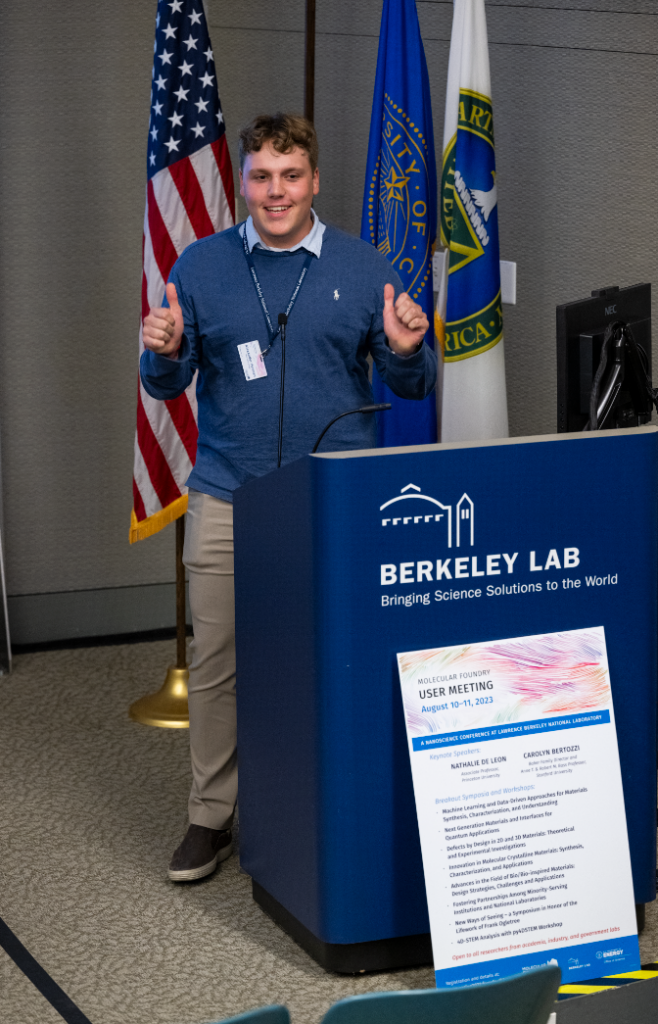

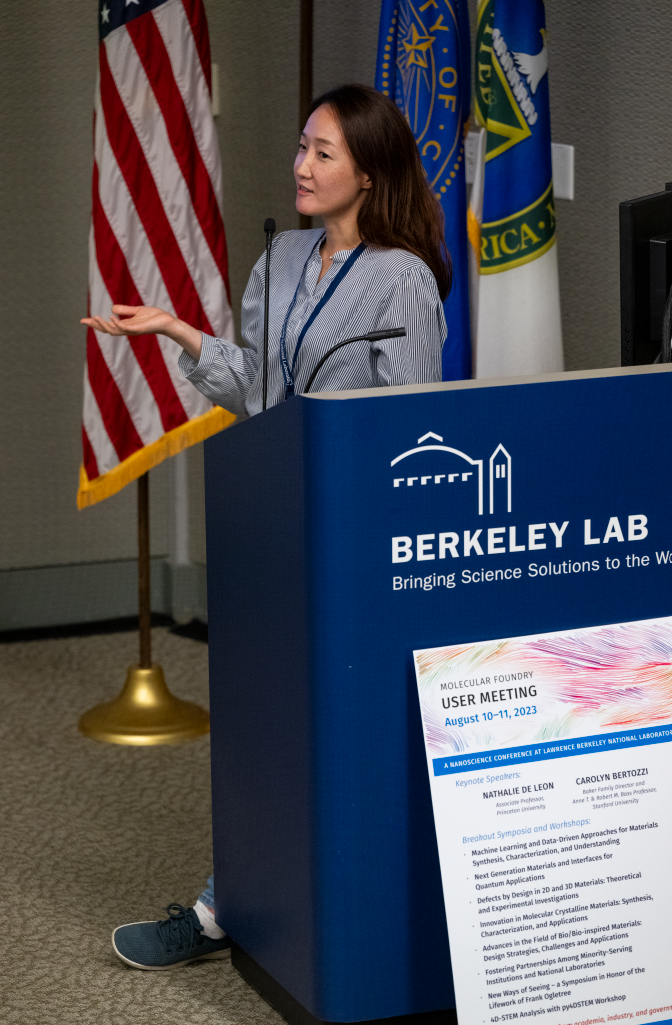
At the end of Day 1, AUM attendees got to hear from 19 early-career scientists in the meeting poster slam! In one minute, these young researchers pitched their work and invited folks to come learn more about their poster.
After the slam, meeting participants gathered at the Poster Session, where 60 scientists presented their work to the community in a casual environment with a reception sponsored by the meeting’s Platinum level sponsor, Raith Nanofabrication.

